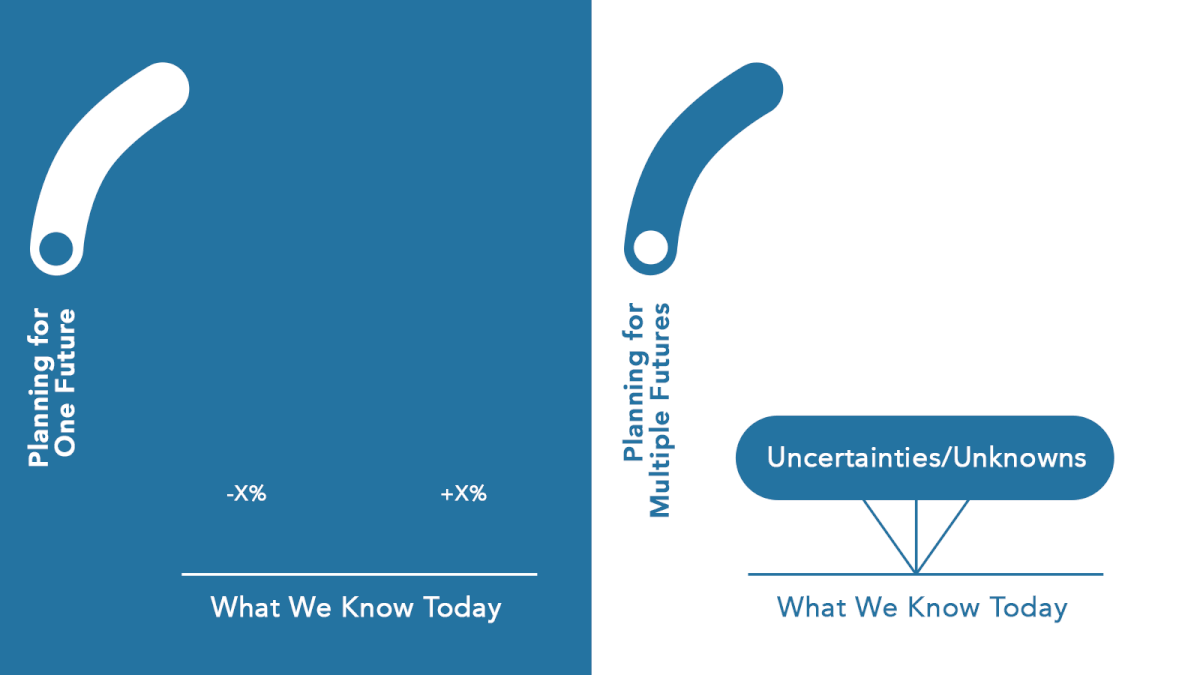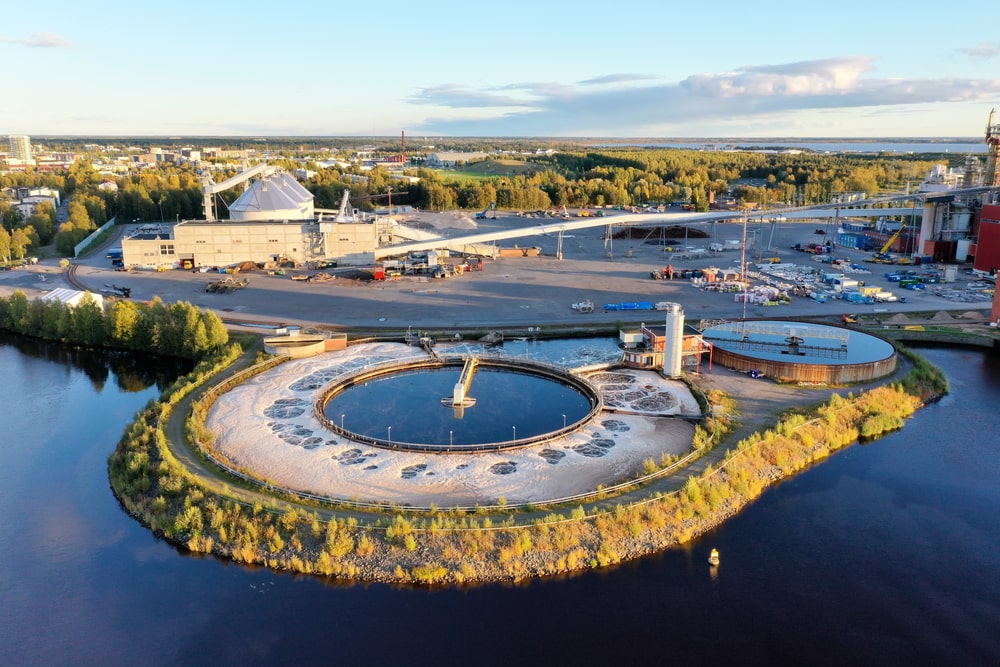Overview
Recommendations
Next Steps
Social media
What do a crystal ball, a time machine, and strategic foresight have in common? All three promise us a glimpse into the future - but only one method is truly effective in preparing us for what is yet to come.
As leaders, it is our job to act in the present and set the course for a successful future.
WU strategy experts Michael König and Konrad Holleis, Head of Custom Programs at WU Executive Academy, explain why this ability enables us to manage the past, present, and future simultaneously, and why companies can not only prove themselves in the BANI environment but also actively shape their own future.
Strategic Foresight is a tool box that allows companies and organizations to proactively shape and manage future developments and trends in their own area. In contrast to other planning and analysis tools, Strategic Foresight enables a multidimensional view of the future. It's not just about making forecasts, but rather about developing and analyzing different scenarios to make informed decisions.
Strategic Foresight takes the past and present into account, thus creating a holistic view of the future. Companies that master this skill can not only respond quickly to changes, but also act proactively and purposefully. Strategic Foresight is therefore a crucial component for companies to be successful in a constantly changing and challenging environment.
Companies are increasingly finding themselves in a BANI environment, where human survival instincts are urgently needed in leadership. "However, we are not talking about apocalyptic chaotic conditions that simply require giving up. On the contrary: companies can not only prove themselves in a BANI world but also actively shape their preferred future. The key is Foresight," says Konrad Holleis, Head of Custom Programs at WU Executive Academy.

In contrast to mere forecasts, Foresight, which includes scenario planning and strategic planning, deals with multidimensional futures. Foresight is the ability to manage the past, present, and future simultaneously. Companies that are well-positioned in this environment know their past, successfully manage the tasks of daily operational business, and actively shape their future in a BANI world. They are not irritated by blind spots or suddenly emerging new phenomena, but can - like humans - anticipate alternative futures, respond quickly and deal with new developments in a structured manner.
In this section, we will explore and discuss the various elements of Strategic Foresight and explain how they can be used in strategic planning and leadership.
Trend analysis and signal monitoring are important elements of Strategic Foresight to identify future developments and trends and understand their impact on the organization. By systematically observing and analyzing relevant signals and trends, companies and organizations can quickly respond to changes and seize opportunities.
Scenario planning is a vital aspect of corporate foresight, enabling organizations to create and analyze different possible futures and their potential effects on the company. By crafting a range of scenarios and exploring their outcomes, organizations can make informed decisions and effectively respond to future developments. This process of scenario development not only helps in preparing for potential challenges but also allows businesses to capitalize on emerging opportunities.
Visions and goals help provide a clear direction and prepare the organization for future developments. By having a clear idea of the desired future and formulating goals, organizations can ensure that their activities are aligned with achieving these goals.
Action options and strategy development provide the organization with a clear direction for action and help successfully overcome future challenges. By developing various action options and formulating a clear strategy, organizations can quickly and purposefully respond to changes and seize opportunities.
The application of Strategic Foresight is an important component of successful business planning and innovation management. However, there are challenges that companies should consider when applying Strategic Foresight.
One of these challenges is managing the flood of information and ensuring that the right information is available at the right time. Another challenge is the predictability of events such as natural disasters or political events that can influence markets and trends. In this case, event monitoring systems and processes can help to respond quickly and effectively to unforeseen events.
To address these challenges, there are proven best practices for the successful use of Strategic Foresight. Business schools and professional development programs can play a crucial role in fostering these practices. Encouraging ongoing professional development and training for all employees is crucial for building knowledge and experience in Strategic Foresight.
Another example of a best practice is the establishment of working groups focusing on specific markets or trends and ensuring continuous monitoring and evaluation. Successful application of Strategic Foresight also requires that companies remain flexible and adaptable. Through a culture of learning and continuous improvement, companies can quickly respond to changing market conditions and events while keeping their visions and goals in mind.
In summary, by applying Strategic Foresight, companies can be proactive and successful in innovation management. Challenges such as information overload and unpredictable events can be addressed through best practices such as training and working groups offered by business schools. Through continuous monitoring and evaluation, companies can quickly respond to market changes and successfully implement their visions and goals.
There are numerous examples of successful applications of Strategic Foresight in companies and organizations.
One example is the Finnish paper manufacturer Stora Enso. The company recognized that the market for traditional paper products was shrinking and therefore focused on developing new, innovative products targeting the growing market for packaging and biomaterials. By applying Strategic Foresight, Stora Enso was able to identify market trends and potential disruptors early on and adapt accordingly.

Another example is the Danish company Novozymes, which produces enzymes for various industries. By using Strategic Foresight, Novozymes was able to identify new markets and applications for its enzyme products and quickly tap into them. As a result, the company was able to maintain its growth and establish itself as a market leader.
The Federal Employment Agency in Germany also used this method to analyze the future of the labor market and develop targeted measures to adapt to the changing labor market. As a result, the Federal Employment Agency was able to improve its services and successfully respond to the changing working conditions.
Overall, these examples demonstrate how the application of Strategic Foresight can help companies and organizations successfully respond to changing markets and trends and develop innovative products and services. By identifying trends and disruptors early on and taking measures to adapt, companies and organizations can strengthen their position in the market and improve their competitiveness.

Konrad Holleis
Although the BANI* world is diverse and challenging, don't be deterred. Sometimes, even 'old acquaintances' from strategic management can be used very well as foresight tools, such as the SWOT analysis. This is recommended for all companies that want to deal with foresight for the first time and want to develop a basis for scenarios.
It is a practical tool that can provide a basis for scenario development, especially for companies that have no experience with futures research. Unlike traditional SWOT analysis, which focuses on the static analysis of strengths, weaknesses, opportunities, and threats, the strategic SWOT approach is dynamic and forward-looking. It enables executives to make decisions that shape the future of their company by examining the future of their business environment.
But how does it work?
In the first step of the strategic SWOT analysis, you need to assess the macro environment with a PESTEL analysis, in which political, economic, social, technological, environmental, and legal trends are examined that will have short- and long-term effects on your company. Then, you can filter the data with an Issue-Impact Matrix, in which the most critical risks and opportunities for the future of your company are determined. For the microenvironment, you can use Porter's Five Forces model to identify competitive forces and potential strategic alliances.
In the second step, analyze your company's value chain to identify strengths and weaknesses compared to your competitors. This will give you a holistic view of your business model and its potential compared to others.
In the third step, you finally compile everything in the familiar SWOT matrix, which shows how your company's strengths can be used to seize opportunities or mitigate risks, and how weaknesses can be addressed to prepare for potential challenges. The strategic SWOT analysis not only provides a basis for forward-looking action but can also help you identify previously unforeseen trends or phenomena that can form the basis for scenario development.
With the help of the strategic SWOT analysis, you can create a solid database of forward-looking information that can flow into multiple scenarios. It can also be embedded in an ERP system so that it becomes an integral part of your company's future planning process. So don't be intimidated by the challenges of foresight in the BANI world - use the strategic SWOT analysis as a practical tool for future planning!

Michael König
Strategic Foresight works so well because it combines classical backward-looking performance management systems with operational strategy implementation and situational tools of future management
There are five generations:
You have learned how to successfully implement Strategic Foresight in your company, how to overcome challenges, and which best practices you can apply. You have also learned about the Strategic SWOT analysis and how to benefit from its advantages.
This valuable concept is taught these executive education programs:
Join 15,000 + professionals and get regular updates on leadership and management topics. Learn something new every time.